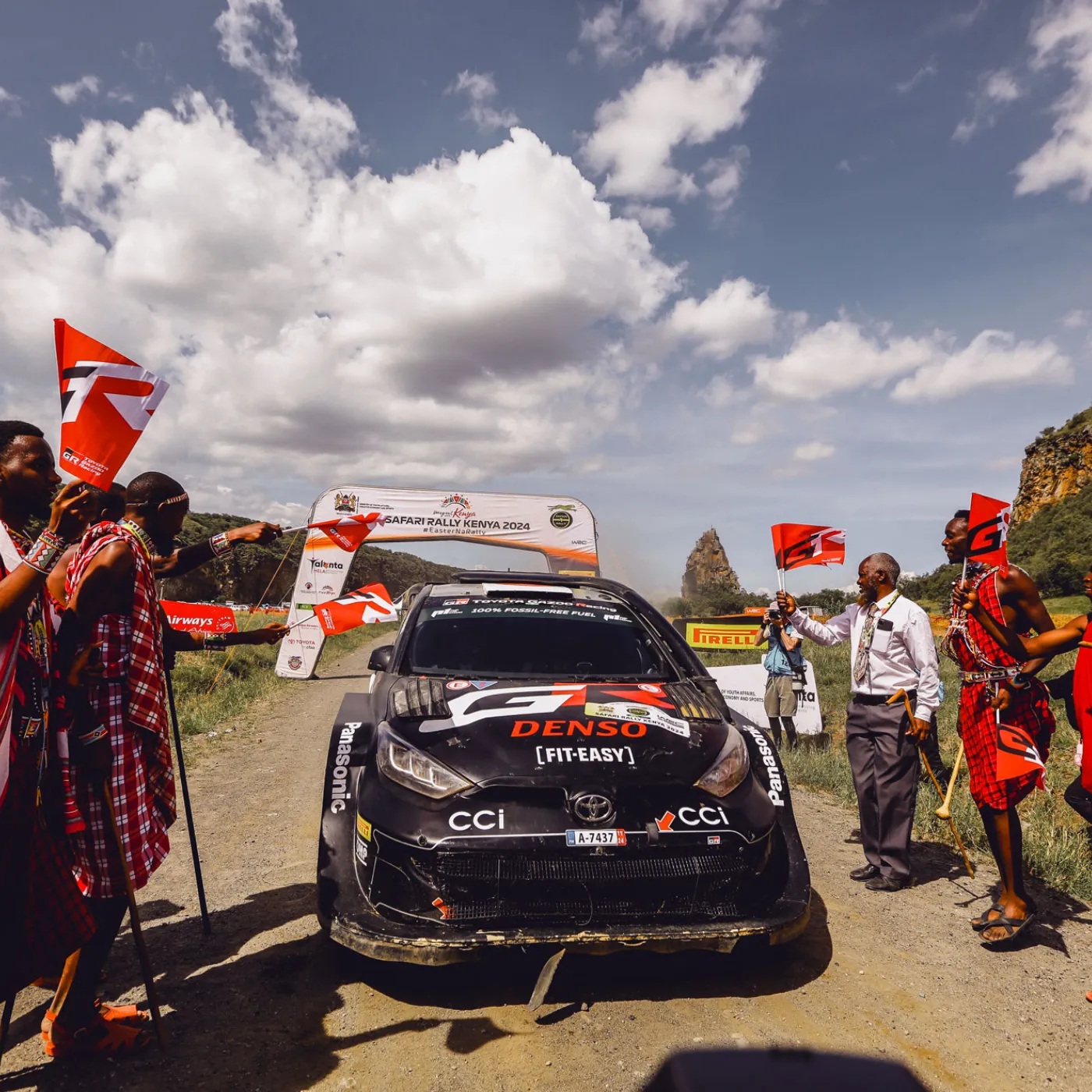The Safari Rally, one of the most iconic events in the World Rally Championship (WRC), has captured the hearts of motorsport enthusiasts for decades. Known for its breathtaking landscapes and challenging terrain, the rally is not just a test of speed but also a trial of endurance, strategy, and skill. As we look ahead to the Safari Rally 2025, Kenya is poised to showcase its unique strengths and innovations that set it apart from other rally locations. This article will delve into the rich history of the Safari Rally, the significance of Kenya as a rallying destination, and the innovations and strategies that make the 2025 edition a potential game-changer in the world of motorsport.
The Legacy of the Safari Rally
A Brief History
The Safari Rally has a storied history that dates back to 1953 when it was first held as a long-distance rally across the stunning landscapes of Kenya. Initially known as the “East African Safari Rally,” it quickly became renowned for its grueling conditions and spectacular scenery.

Early Years
The First Rally: The inaugural event featured a challenging route that tested the limits of both drivers and vehicles. Over the years, it evolved from a local competition into an international spectacle, attracting top drivers from around the globe.
Iconic Stages: Some of the rally’s most memorable stages include the treacherous roads through the Maasai Mara, the Great Rift Valley, and the rugged terrain of Mount Kenya.
Evolution into the WRC
In 1973, the Safari Rally became part of the World Rally Championship, further solidifying its status on the global stage. The event has seen legendary drivers and iconic vehicles, making it a significant chapter in rallying history.
Notable Champions
Ari Vatanen: The Finnish driver is one of the most celebrated champions of the Safari Rally, known for his daring driving style and remarkable victories.
Colin McRae: The late Scottish driver brought immense popularity to the sport, winning the rally in 1997 and leaving an indelible mark on its legacy.
The Importance of Kenya as a Rally Destination
Unique Challenges
The Safari Rally stands out among other WRC events due to the unique challenges it presents. The combination of rough terrain, unpredictable weather, and wildlife encounters makes it a true test of skill and endurance for drivers.
Terrain and Conditions
Rugged Roads: The rally features a mix of gravel, mud, and rocky paths, often exacerbated by Kenya’s diverse weather patterns. These conditions require drivers to adapt their strategies on the fly.
Wildlife: The presence of wildlife adds an element of unpredictability. Drivers must remain vigilant to avoid unexpected encounters with animals on the road.
Cultural Significance
Kenya’s rich cultural heritage and breathtaking landscapes contribute to the allure of the Safari Rally. The rally not only showcases the beauty of the country but also promotes tourism and local communities.
Community Involvement
Local Support: The event is supported by local communities, who rally around the rallying culture, providing hospitality and enthusiasm for both competitors and spectators.
Economic Impact: The Safari Rally plays a significant role in boosting local economies, with increased tourism and investment in infrastructure.
Innovations for the 2025 Safari Rally
Technological Advancements
As the world of motorsport evolves, so does the technology that supports it. The 2025 Safari Rally promises to incorporate cutting-edge innovations that enhance safety, performance, and spectator engagement.
Vehicle Technology
Hybrid Vehicles: In line with the global push for sustainability, the introduction of hybrid rally cars is set to make the 2025 Safari Rally more environmentally friendly. These vehicles will combine traditional combustion engines with electric power to reduce emissions.
Telematics and Data Analytics: Advanced telemetry systems will provide teams with real-time data, allowing them to make informed decisions during the race. This technology enhances performance and safety.
Enhanced Spectator Experience
The 2025 edition of the Safari Rally aims to elevate the spectator experience, making it more engaging and accessible for fans.
Digital Engagement
Live Streaming and Broadcasting: Enhanced live streaming options will allow fans worldwide to follow the rally in real time, complete with expert commentary and analysis.
Interactive Apps: Mobile applications will provide fans with real-time updates, stage information, and interactive maps, enhancing their overall experience.
Kalle Rovanperä: Kenya’s Rising Star
The Young Champion
Kalle Rovanperä, the talented Finnish driver, has emerged as one of the brightest stars in the WRC. As the reigning champion, he has a unique opportunity to showcase his skills in the challenging stages of the Safari Rally.
Breakthrough Performance
Rovanperä’s victory in the 2022 WRC season, where he became the youngest champion in history, marked a significant milestone in his career. His innovative driving style and ability to adapt to varying conditions have set him apart from his peers.
The Challenge Ahead
As Rovanperä prepares for the 2025 Safari Rally, he faces the daunting task of navigating Kenya’s wild stages. His experience and adaptability will be crucial in overcoming the unique challenges presented by the rally.
Focus on Strategy
Stage Preparation: Rovanperä and his team will meticulously study each stage, analyzing terrain conditions and weather patterns to develop effective strategies.
Tire Management: Tire choice will play a vital role in performance, as the unpredictable conditions of the Safari Rally require careful consideration.
The Competitive Landscape
Rising Competitors
The 2025 Safari Rally will feature a competitive field, with experienced drivers and emerging talents ready to challenge Rovanperä for victory.
Notable Rivals
Ott Tänak: The Estonian driver, known for his aggressive driving style, will be a formidable opponent. His experience in various rally conditions makes him a strong contender.
Thierry Neuville: The Belgian driver consistently performs well in challenging conditions and will be looking to capitalize on any mistakes made by rivals.
Team Dynamics
The importance of teamwork cannot be overstated in rallying. Successful teams work seamlessly to ensure optimal performance on the stages.
Role of Co-Drivers
Navigational Expertise: Co-drivers play a crucial role in rallying, providing essential information about upcoming stages, road conditions, and potential hazards.
Building Trust: The relationship between driver and co-driver is built on trust and communication, which is vital for success in high-pressure situations.
The Road to Conquering Kenya
Mental Preparation
To conquer the challenges of the Safari Rally, drivers must prepare mentally as much as physically. The psychological aspects of rally racing can significantly impact performance.

Visualization Techniques
Many successful drivers, including Rovanperä, use visualization techniques to mentally rehearse their strategies and responses to potential challenges. This practice helps build confidence and focus.
Embracing the Adventure
The Safari Rally offers not just a race, but an adventure through Kenya’s stunning landscapes. Drivers must embrace the journey, appreciating the beauty and unpredictability of the rally.
Connection to Nature
The experience of racing through Kenya’s wilderness allows drivers to connect with the environment in a unique way. This connection can enhance their motivation and drive to succeed.
The Future of the Safari Rally
Sustainability Initiatives
As the world shifts towards more sustainable practices, the Safari Rally is poised to lead the way with innovative initiatives that promote environmental responsibility.
Eco-Friendly Practices
Waste Management: Organizers are implementing strategies to minimize waste during the rally, including recycling programs and reduced plastic usage.
Carbon Offsetting: The rally aims to offset its carbon footprint through tree-planting initiatives and partnerships with environmental organizations.
Expanding Global Reach
The Safari Rally is not just a local event; it has the potential to expand its global reach and impact. By leveraging digital platforms and international partnerships, the rally can attract a broader audience.
Collaborations and Sponsorships
Global Brands: Partnering with international brands can enhance the rally’s profile, attracting sponsorships and investment that support its growth.
International Media Coverage: Increased media attention will help promote the rally to a worldwide audience, showcasing Kenya’s beauty and the excitement of rallying.

The Safari Rally 2025 promises to be a landmark event in the world of motorsport. With its rich history, unique challenges, and the potential for innovation, Kenya is poised to conquer the world of rally racing. Kalle Rovanperä, along with a competitive field of drivers, will face the thrilling challenge of navigating the wild stages of Kenya.
As the rally approaches, anticipation builds among fans and competitors alike. The Safari Rally is not just about speed; it’s about endurance, strategy, and the spirit of adventure. With the backdrop of Kenya’s stunning landscapes, the 2025 edition is set to be a celebration of motorsport, culture, and the indomitable human spirit.






